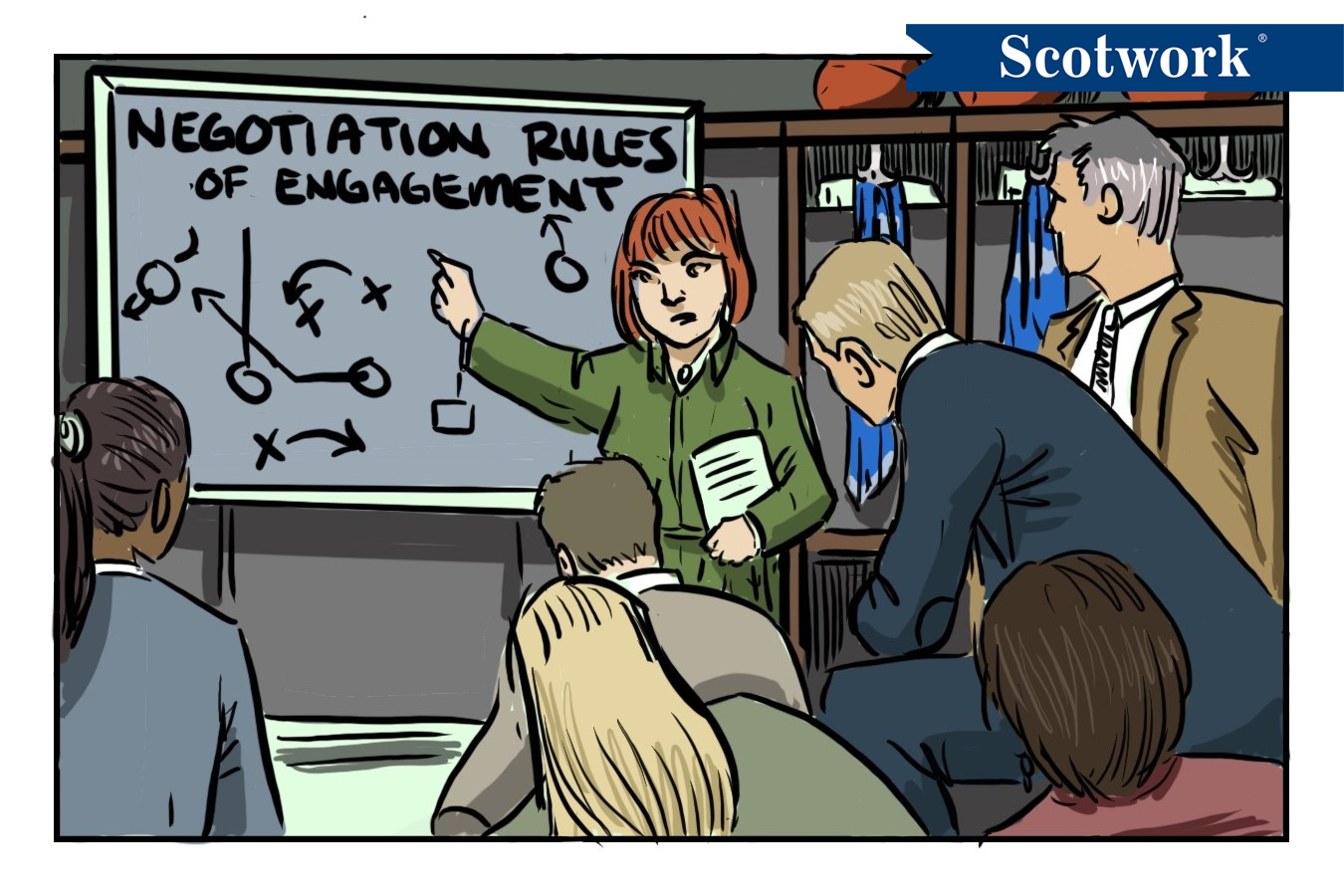I’ve been working recently with a client on a large formal negotiation. In fact, there are 70 people in the negotiating room. Given the size and scope, the negotiation teams agreed on some rules of engagement to keep things organized and orderly. Their approach to the engagement can provide great lessons for even the smallest negotiations.
Very few negotiations begin with a discussion around the rules of engagement. If anything, most people will assume unspoken, culturally accepted norms between parties. However, discussing how parties will go about a negotiation can help eliminate unnecessary strain, consternation, or other potential deal-derailing issues.
The rules they made about the large negotiation focused on key areas including publicity about the negotiation, how information and proposals will be shared, and the flow of how the talks will progress.
Who’s involved — and when?
The negotiation has a significant profile in its industry. As such, both parties wanted to ensure when and how certain information is made public to protect the ability of all parties to freely discuss and debate ideas at the negotiating table without fear of public scrutiny.
Teams working on smaller negotiations might not need to be concerned about dynamics related to publicity, but they might need to care about the dynamics related to when the negotiation gets attention from others not directly involved in the negotiation like stakeholders or decision makers. Involvement from others not sitting at the table negotiating can have an impact on the negotiation.
Once others get involved, relationship dynamics among the negotiators can change. So, the more negotiators can be made aware of, or control, the timing of their involvement, the easier it will be for them to adjust and not assume bad intentions.
What are the rules?
The larger negotiation laid out rules for both parties, including how to introduce proposals, the appropriate times for questions and rebuttals, and topics considered to be on — and off — the record. The team clarified how larger sessions would be used versus the purpose of smaller, sidebar conversations and how they would be reported. Clarifying the rules and agreements about how the negotiation would work was crucial because the outcomes of the negotiations are binding: anything contained within them could be used for litigation or dispute-resolution.
Typical negotiations may not need to be as detailed regarding rules of engagement. However, getting an understanding of what’s acceptable and important can help you avoid confusion or frustration. For instance, being very specific about what’s discussed in person versus via email might be beneficial to structuring expectations regarding information exchange. Have an understanding of how proposals are made — are they a package of items that must be considered together, or can individual proposals be made with each line item being accepted or rejected on its own? Knowing the rules can speed up the negotiation.
What’s the flow?
Finally, the teams in the larger negotiation determined an agreed-upon plan for the flow of the negotiation. For instance, both sides would have an opportunity to present their opening arguments and there would be sufficient time for questions and rebuttals. They also agreed on how individual rounds of meetings would be handled, including when breaks would or could be taken. Not only did they agree on how the flow of the whole negotiation would work, but also how it could be changed if necessary.
Negotiations with fewer people may not need to be as prescriptive. However, ensuring that both parties are on the same page regarding how talks will proceed — including how decisions will be made — structures expectations. At the very least, laying out an agenda and anticipated goals before a meeting begins can lead to greater efficiency.
After watching 70 negotiators come together for a productive and efficient negotiation, it’s clear that talks can run much more smoothly with a little bit of planning and pre-negotiation alignment, which frees the parties to do what they need to do — negotiate.
We Can Help Your Negotiations Run More Smoothly.
Laying out an anticipated agenda and goals before a negotiation even begins can eliminate deal-derailing issues. When you rely on Scotwork experts’ nearly 50 years of real-world experience, you can plan properly, freeing both parties to do what they need to do — negotiate.

